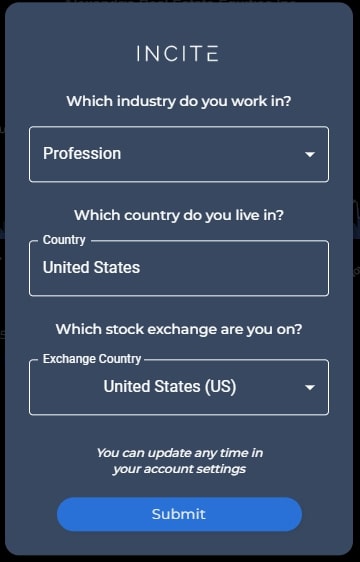Top 10 Tips To Assess The Quality Of Data And The Sources For Ai-Powered Stock Analysis And Forecasting Trading Platforms
In order to provide accurate and reliable information it is essential to verify the sources and data that are used by AI stock prediction and trading platforms. Poor data quality can lead to flawed predictions, financial losses and a lack of trust of the platform. Here are the top 10 suggestions on evaluating the quality of data and its sources.
1. Verify Data Sources
Verify the source of the data Ensure the data source is trustworthy and well-known data providers (e.g., Bloomberg, Reuters, Morningstar, or exchanges like NYSE, NASDAQ).
Transparency. Platforms must make their data sources clear and updated regularly.
Beware of dependence on one source: Trustworthy platforms integrate information from multiple sources to reduce biases and errors.
2. Assess Data Freshness
Real-time vs. delayed data: Determine whether the platform is providing actual-time data, or delayed data. Real-time is important for active trading. However, data that is delayed can be adequate for long-term analytics.
Update frequency: Check the frequency with when data is being updated.
Data accuracy of historical records: Ensure that the accuracy of historical data and that it is free from gaps or anomalies.
3. Evaluate Data Completeness
Find out if there is missing or incorrect data.
Coverage: Ensure your platform has a wide variety of indices, stocks, and markets relevant to your trading strategy.
Corporate actions: Ensure that your platform can be able to account for splits in stock or dividends. Also, check if it is able to account for mergers.
4. Accuracy of Test Data
Cross-verify the data: Check data from the platform to other sources of data you trust to guarantee the accuracy of the data.
Error detection: Search for price errors, mismatched financial metrics, or other outliers.
Backtesting. Make use of old data to test your trading strategy and determine if it matches expectations.
5. Measure Data Granularity
In terms of level of detail, make sure the platform is able to provide detailed data, such intraday pricing, volume, bidding-asking spreads and order book depth.
Financial metrics: Verify that the platform offers comprehensive financial statements, such as the balance sheet, income statement and cash flow along with crucial ratios like P/E, ROE, and P/B. ).
6. Verify that the Data Cleaning is in place and Preprocessing
Data normalization: To maintain uniformity, make sure that the platform normalizes all data (e.g., by adjusting dividends or splits).
Outlier handling: Examine how the platform deals with outliers and anomalies in the data.
Data imputation is not working: Find out whether the platform has effective methods to fill in missing data points.
7. Assess the data consistency
Aligning data to the time zone: To avoid any discrepancies ensure that all data is synced with one another.
Format consistency: Make sure that the data is formatted in a consistent format.
Cross-market compatibility: Verify that the information coming from exchanges and markets are harmonized.
8. Evaluate the Relevance of Data
Relevance to your strategy for trading The data you are using is compatible with your trading style (e.g. analytical techniques or qualitative modeling and fundamental analysis).
Feature selection Choose a platform that includes features that are relevant and can improve your forecasts.
Check the integrity and security of your information
Data encryption: Ensure the platform is encrypted to safeguard the data while it is being transmitted and stored.
Tamper-proofing : Make sure that the data has not been manipulated by the platform.
Compliance: Check to see whether the platform complies with the regulations on data protection.
10. Check out the Platform’s AI Model Transparency
Explainability. You must understand how the AI uses data to make predictions.
Find out if the system has an option to detect bias.
Performance metrics: Evaluate the accuracy of the platform by looking at its performance history, metrics as well as recall metrics (e.g. precision, accuracy).
Bonus Tips
Reputation and reviews from users Review user reviews and feedback to assess the reliability of the platform and its data quality.
Trial period. You can try an unpaid demo or trial to experience the features of the platform.
Customer support: Check that the platform has a solid customer service that can assist with any questions related to data.
If you follow these guidelines to help you better evaluate the quality of data and sources of AI platform for stock predictions, ensuring you make an informed and trustworthy trading decision. View the recommended https://www.inciteai.com/ for blog examples including ai trading, chatgpt copyright, ai trade, AI stock picker, ai investing app, AI stock trading app, ai investing, incite, ai investing platform, chart ai trading assistant and more.

Top 10 Tips To Assess The Regulatory Conformity Of AI stock Predicting/Analyzing Trading Platform
Compliance with regulatory requirements is an essential element when it comes to considering AI trading platforms for stock prediction or analysis. Compliance is important as it guarantees that the platform adheres to regulations and legal frameworks. Also, it protects users’ data. Here are top 10 tips on how to assess the level of compliance these platforms have.
1. Verify the Licensing & Registration
Regulatory Authorities: Check that the platform is registered with the appropriate regulatory bodies (e.g. SEC US, FCA UK and ASIC Australia) and holds an authorization.
Broker partnership: If the platform is integrated with brokers, ensure that the brokers are also legally licensed and regulated.
Public records: Go to the site of the regulator to determine if the platform has been registered or if it has any time violated the law.
2. Assessment of the data privacy Compliance
GDPR If a platform is operating within the EU or offering services to EU users, the platform should comply with the General Data Protection Regulation.
CCPA – California Consumer Privacy Act: Check for compliance with California users.
Policies on handling data. Review the platform’s privacy policies and ensure that it clearly describes how data about users is used to collect, share, and stored.
3. Evaluating Anti-Money Laundering / AML measures
AML Policies: The platform should have robust AML (Anti-Money Laundering) policies to identify money laundering and stop it from happening.
KYC procedures: Check if the platform follows Know Your Customer (KYC) procedures for verifying the identities of users.
Transaction monitoring: Determine whether the platform is able of monitoring transactions and reporting any suspicious transactions to relevant authorities.
4. Verify that you’re in compliance Trading Regulations
Market manipulation: Verify that the platform contains measures to avoid market manipulation like washing trading, spoofing.
Types of orders. Verify whether your platform is in compliance with the rules for order types.
Best execution: Check if the platform is in line with best execution practices, ensuring transactions are executed at the most competitive price.
5. Cybersecurity Assessment
Data encryption: Ensure that the platform uses encryption to secure data either in transit or when it is at in rest.
Incident response: Verify that the platform has a plan for incident response in place for cyber-attacks and data breaches.
Certifications: Check if the platform has been accredited for cybersecurity (e.g. ISO 27001, SOC 2)
6. Transparency and Disclosure A Review
Fee disclosure: Ensure that the platform has clearly disclosed all fees including hidden charges or additional costs.
Risk disclosure: Make sure that the platform provides explicit information about risk. Particularly, for high-risk or leveraged trading strategies.
Performance reporting: Check whether the platform offers transparent and accurate performance reports for its AI models.
7. Check for Compliance With International Regulations
Cross-border trading. If you intend to trade internationally, check that your platform complies with the regulations in force.
Tax reporting: Check if the platform offers tools or reports to help users comply with tax laws.
Sanctions compliance: Ensure the platform complies with international sanctions and doesn’t allow trading with prohibited entities or countries.
8. Assess Record-Keeping and Audit Trails
Transaction records: The platform should maintain detailed records on all transactions to be used for regulatory and auditor reasons.
Logs of user activity (logs) You can check to check if the platform records the activities of users, such as logins and trades. Also, check if the account settings have altered.
Audit readiness: Make sure that the platform is able to supply all the necessary documentation and logs in case of a regulatory audit occurs.
9. Examine compliance with AI-specific Regulations
Algorithmic Trading Rules If your broker supports trading using algorithms, ensure that it adheres to regulations like MiFID II (in Europe) or Reg SCI (in the U.S.).
Fairness and Bias: Examine to determine if there are any biases the platform is able to detect and reduce in its AI model. This will ensure ethical and fair trade.
Explainability. Some regulations may require the platform to describe AI-driven predictions and decisions.
Examine the User Feedback and Regulatory Histories
Feedback from users: Read user reviews to assess the credibility of the platform in terms of compliance with the law.
Regulatory History: Look for past violations of the regulations and penalties, fines or sanctions.
Third-party audits: Verify whether the platform is subject to regular audits by a third party to ensure compliance with the regulations.
Bonus Tips:
Legal consultation: Consult a lawyer to ensure that the platform complies with all applicable regulations.
Trial period: Try the demo or trial version for free to test the platform’s compliance features and documentation.
Support for customers – Ensure that the platform has the capacity to assist with any compliance-related concerns or questions.
Follow these tips to evaluate the compliance with regulations and protect of your interests. The compliance reduces legal risk and improves trust in the platform. Have a look at the top rated chart ai trading blog for more advice including best AI stocks to buy now, ai investment tools, best ai penny stocks, chart analysis ai, investing with ai, invest ai, ai for trading stocks, trading ai tool, stock trading ai, best stock prediction website and more.

